NORTH WALES COAST RAILWAY :NOTICE BOARD
Rheilffordd arfordir gogledd Cymru: Hysbysfwrdd
11 September 2023




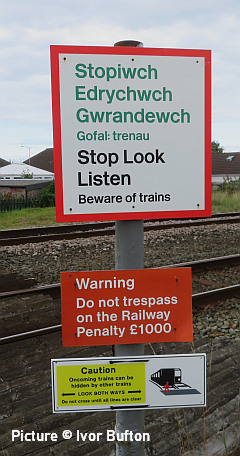
Extra sign at Prestatyn - is it unofficial?
Contributions to the Notice Board are welcome, although they may not always be used, due to time constraints, especially if they don't follow the advice and file name convention given on the Contributions Page.
Forthcoming events
Charter trains, and meetings, may be subject to cancellation or postponement. See our Calendar Page for Club and Society details.
September 2023
Wednesday 13 September Statesman Rail The Snowdonia Statesman High Wycombe IST Birmingham NS - Betws-y-coed/Blaenau Ffestiniog LSL Pullman
16-17 September : Bala Model Show Ysgol Godre'r Berwyn School, Ffrydan Road, Bala, Gwynedd LL23 7RU 10.00-16.00 both days
Approximately 20 layouts, half standard gauge, half narrow (including live steam).
13 September UK Railtours 'The Snowdonian' London Euston - Llandudno Junction and return
October 2023
Friday 6 October Clwyd Railway Circle A History of The Internal Railway at Shotton Steelworks and its Links with the Main Line. Glyn Jones
11 October Statesman Rail The Snowdonia Statesman Stevenage - Nuneaton - Betws-y-coed /Blaenau Ffestiniog LSL Pullman
November 2023
Friday 3 November Clwyd Railway Circle The Railway in Conway. Larry Davies
December 2023
Friday 1 December Clwyd Railway Circle Members Night Presentations. Members are invited to give a 15-minute presentation of their choice.
(see our Calendar page for meeting venues)
North Wales Coast Railway website created and compiled by Charlie Hulme
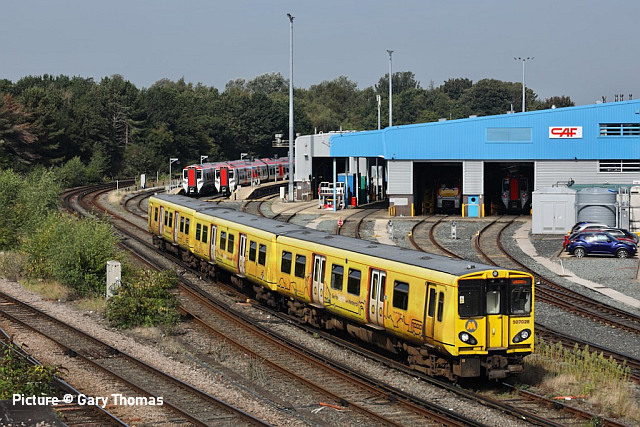
One for posterity: 507 028 passes the CAF depot at Chester on 6 September, as 197s and 175s look on. Trains hauling pairs 507s and 508s to the scrapyard are now a regular event, with four runs planned for September, The 508s will be extinct by the end of the year, the 507s will last a little longer. Picture by Gary Thomas.
A Busy Week
In the week beginning 4 September 37 254 visited North Wales with a Network Rail train over two days, spending the intermediate night at Bangor.
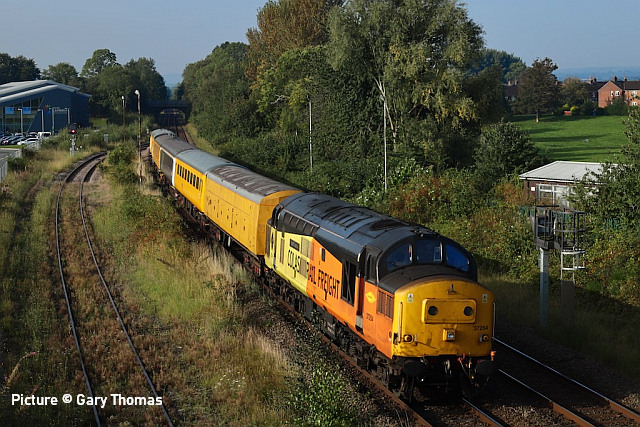
Starting at Chester (08:06) on 6 September, the train first headed south to Wrexham, Shrewsbury and Cosford, then back to Shrewsbury and Wrexham to Chester. Gary Thomas photographed the train at Croes Newydd, Wrexham heading south at 08:29.
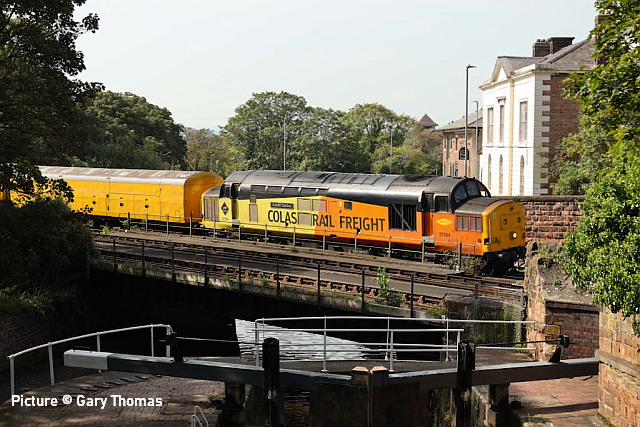
Approaching Chester past the locks for a planned lunch break from 13:05 to 14:04 (Gary Thomas).
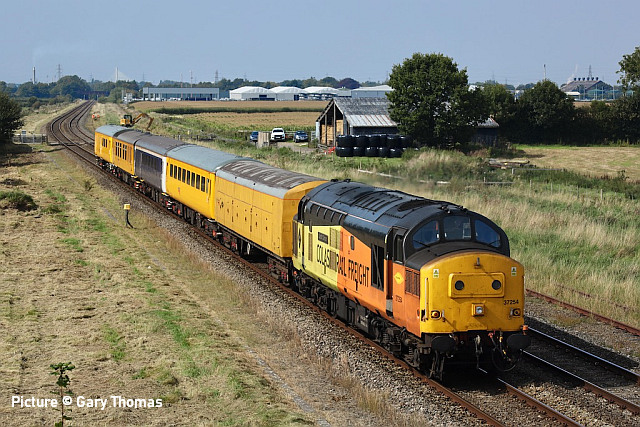
On the Coast line at Beeches Farm, on 14:06, the loco propelling towards Bangor (Gary Thomas)
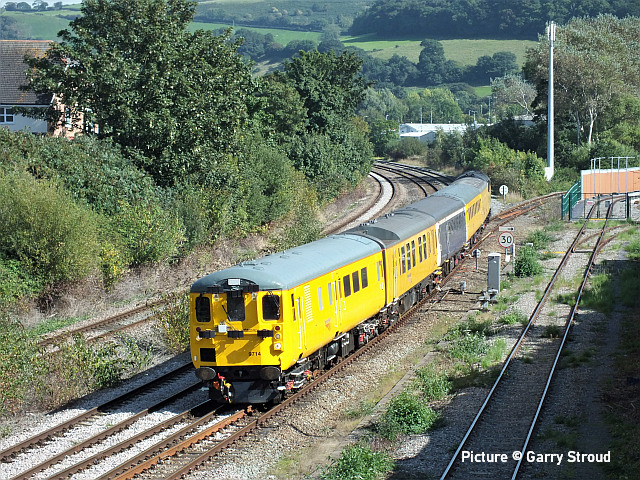
Approaching Llandudno Junction, driving trailer 9714 leading (Garry Stroud).
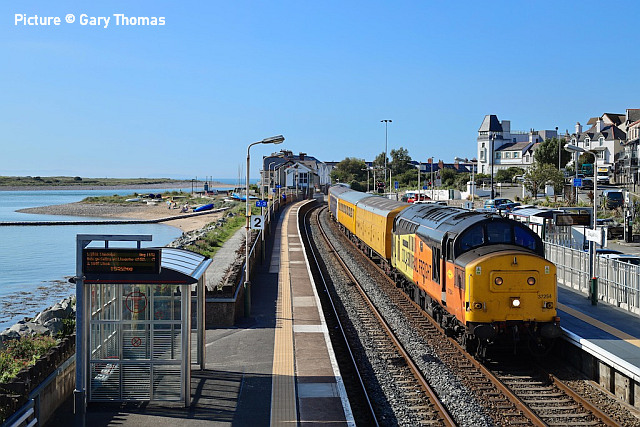
Deganwy (15:17), after a visit to Llandudno. Bangor was reached on time and 16:06, to be stabled for the night.
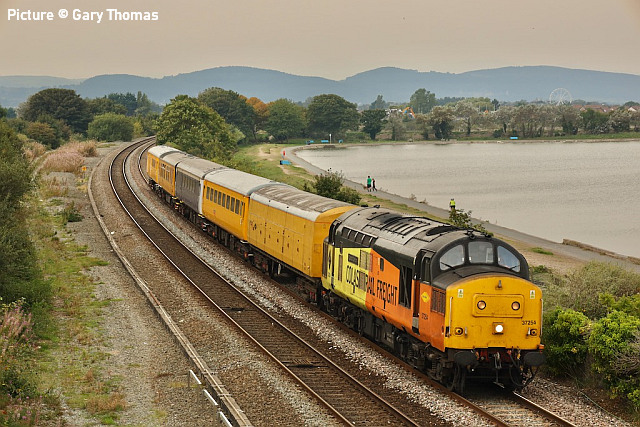
Thursday 7 September, and the train departed Bangor at 14:21 to Chester. A planned trip to Blaenau Festiniog was cancelled, the train heading straight to Chester for an out-and-back trip to Warrington Bank Quay. Passing Rhyl Marine Lake at 15:12 (Gary Thomas).
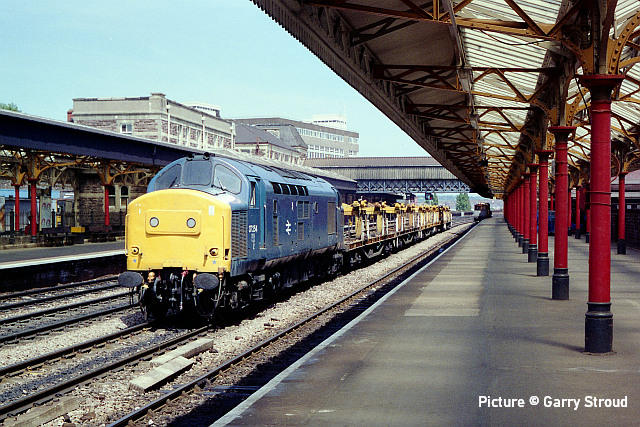
Flashback: With 35 years separating the images above and representing the Rail Blue era, 37 254 passes Newport at 13:50pm and heads west towards Cardiff with an engineers service, taken on Tuesday 14 June 1988 by Garry Stroud.
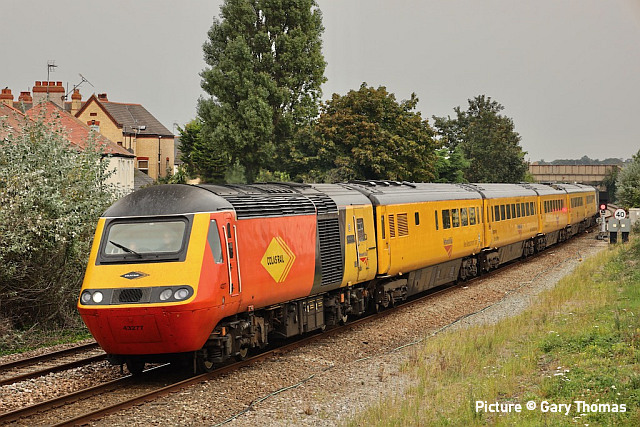
The HST 'Plain Line Pattern Recognition' train also made an appearance on 7 September, seen heading west past Rhyl Marine Lake at 13:47 with 43 277 leading (Gary Thomas).
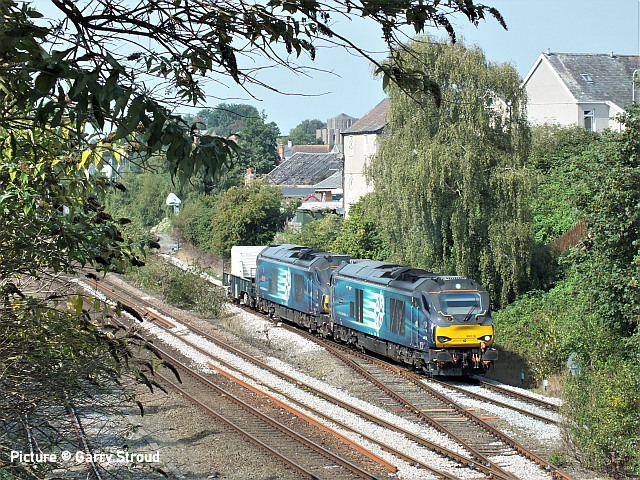
Photographers were also treated on 8 September to one of the occasional visits by the DRS Nuclear Flask train double-headed by 68 016 and 68 033 - recently re-named The Poppy. Garry Stroud's picture shows the train passing Llandudno Junction with train 6Z43 11:58 Valley to Crewe coal sidings.
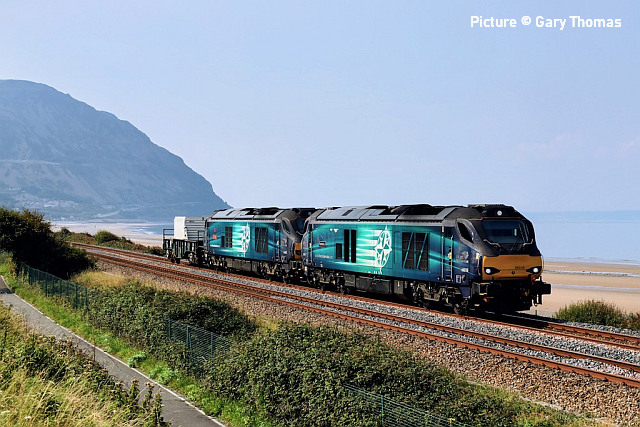
Gary Thomas captured the return run passing Dwygyfylchi.
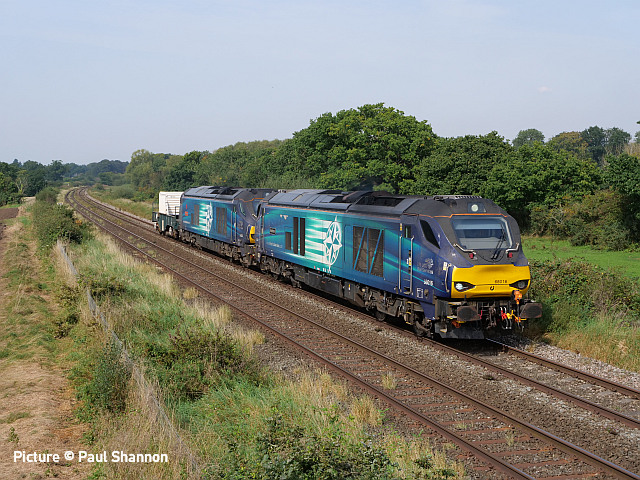
Rowton, between Chester and Crewe (Paul Shannon)
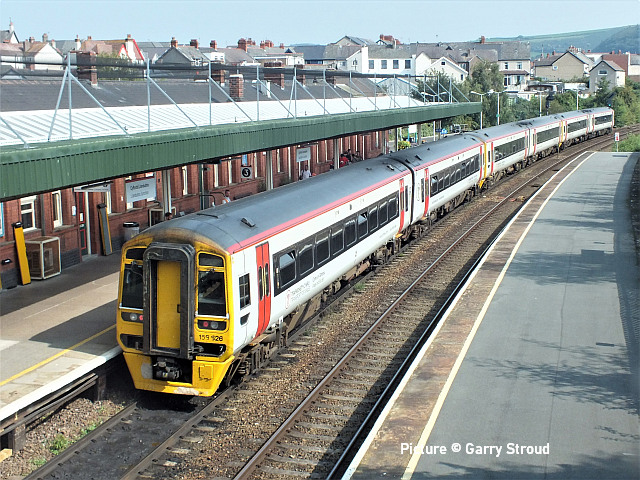
Garry Stroud writes: I have not seen a 6-car 158 along the Coast for years, 4 car sets are quite common and yet on Friday 8 September 158 826, 158 836, 158 830 were captured departing Llandudno Junction at 14:39 with the slightly-delayed 13:27 Holyhead to Birmingham International service. Perhaps it was the Friday rush as I must admit the service did look rather busy.
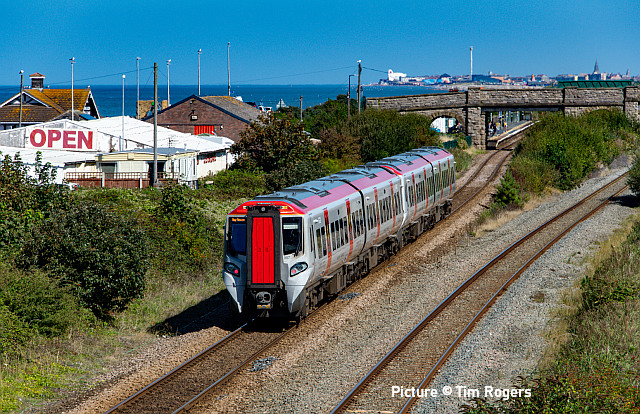
Sunny Abergele on 4 September with 197 044 and 197 007 Happy Valley working 1H89 13:07 Holyhead to Manchester Airport (Tim Rogers)
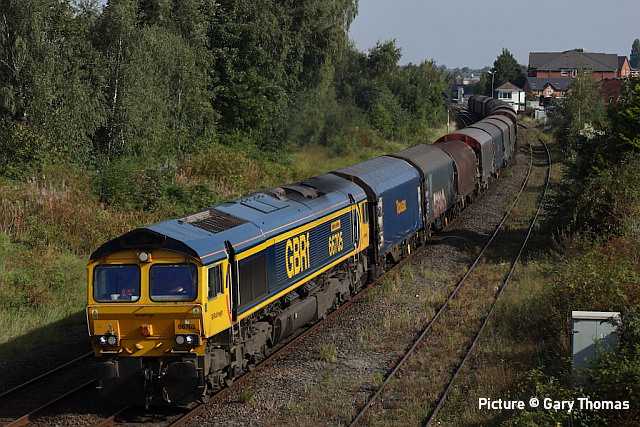
At Croes Newydd on 6 September, 66 705 Golden Jubilee, now restored to standard GBRf livery, passes with the Dee Marsh - Margam steel carriers (Gary Thomas).
Slate traffic
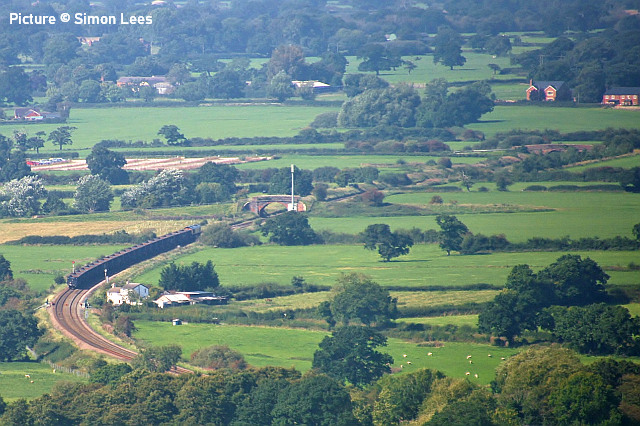
A view of 4 September's slate empties heading west, seen from Beeston Castle (Simon Lees)
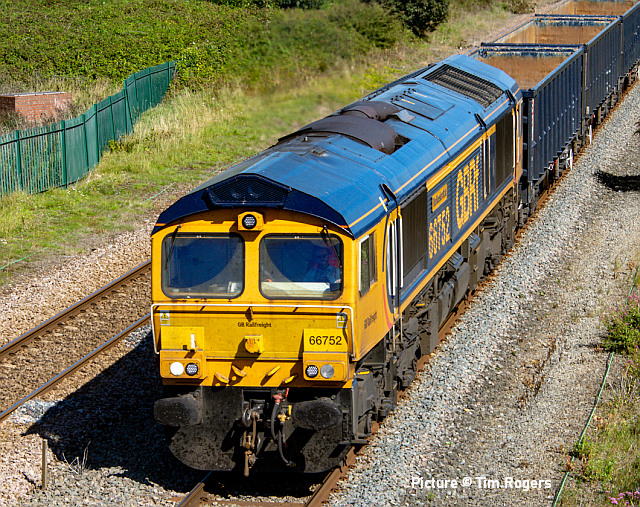
Portrait of the loco at Abergele (Tim Rogers).
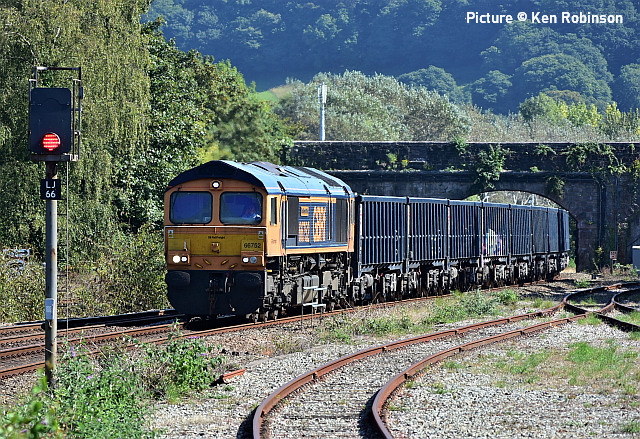
66 752 The Hoosier State approaching Llandudno Junction with the slate waste empties from Wellingborough on 4 September ...
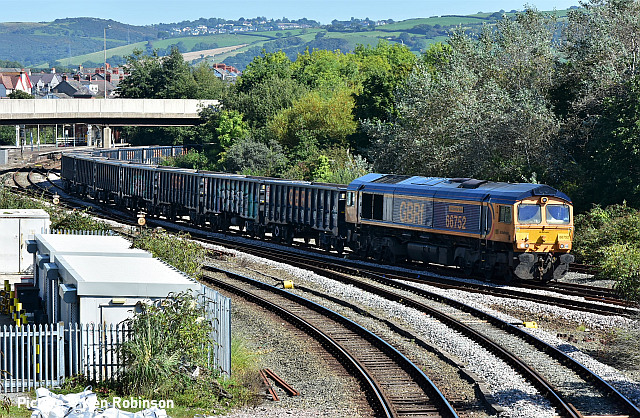
... Having arrived at the far end of the station, the wagons are propelled back into the loop ...
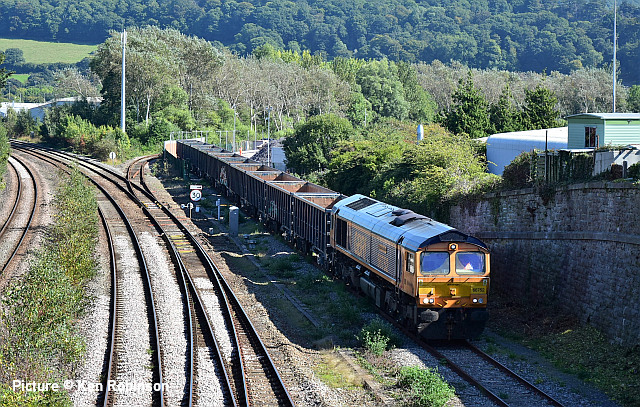
... Here the train is split into two sets of (usually) 11 wagons, and the first set is seen being shunted into the loading siding by 66 752 . Pictures by Ken Robinson (3).
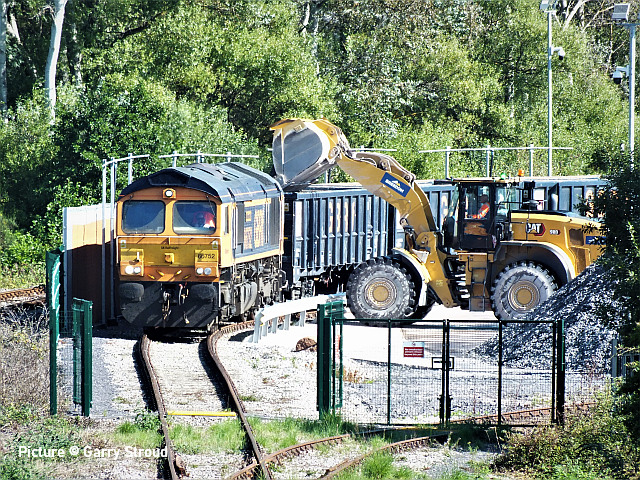
Collecting the first wagon of slate waste (Garry Stroud).
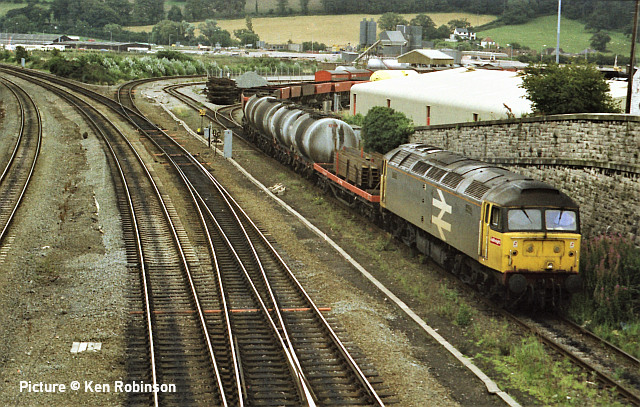
A 'comparison' shot from August 1987 shows an unidentified class 47 shunting an interesting variety of wagons in the yard, then officially known as Glan Conway Yard.
On the Wirral - report by Chris Taylor
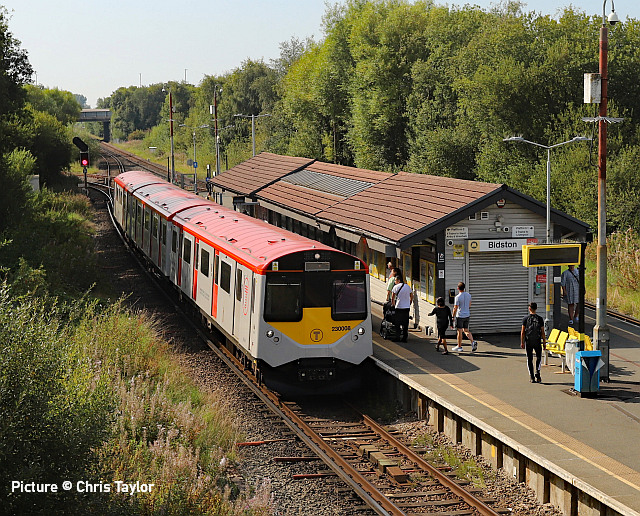
Above, 230 008 at Bidston - after arriving 11 minutes late it departed 15 minutes late on the 14:34 to Wrexham Central after fitter's attention. The fitters travelled with the train. On 6 September. 230 008 only managed one more round trip retiring to Birkenhead North depot, being replaced by 230 007 on the 16: 34 to Wrexham.
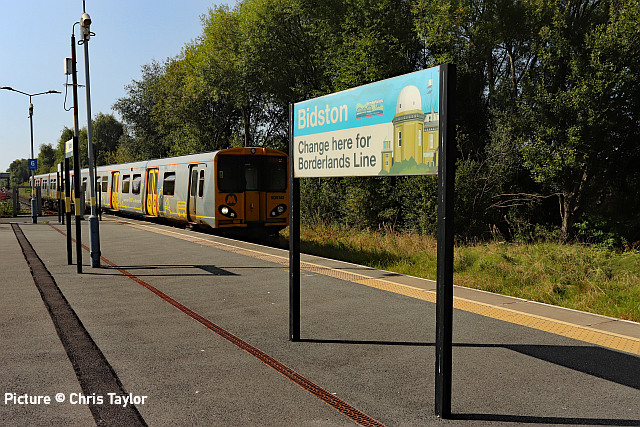
Seeing its last days out is 508 141 on the 14:36 from West Kirby at Bidston on 6 September.
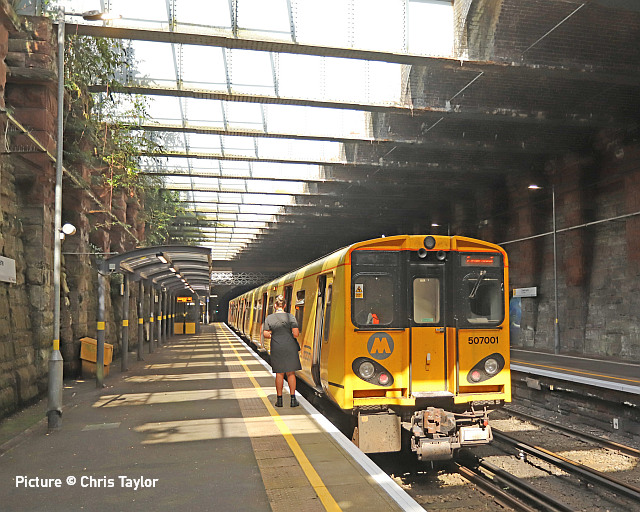
The first one - 507 001 seen here at Green Lane on the 12:14 from Chester was built in 1978, 45 years ago. On 6 September the new 777s were working the Ormskirk and Kirkby trains with one diagram on the New Brighton & West Kirby trains, none yet on the Southport to Hunts Cross trains.
News from Shrewsbury - by Graham Breakwell
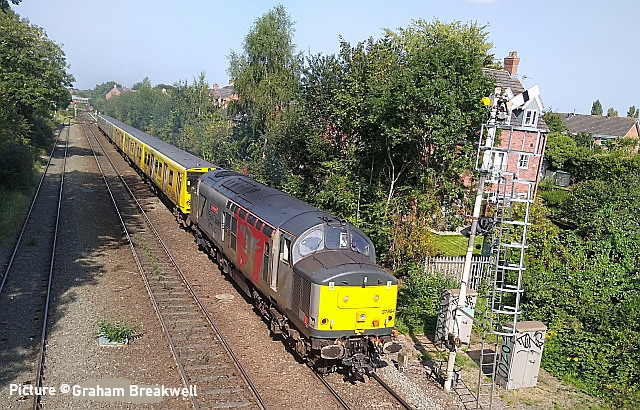
5Q78 Birkenhead North EMUD to Newport Docks with 37 884 hauling two withdrawn 3 car units to the Sims Group scrapyard on 8 September ...
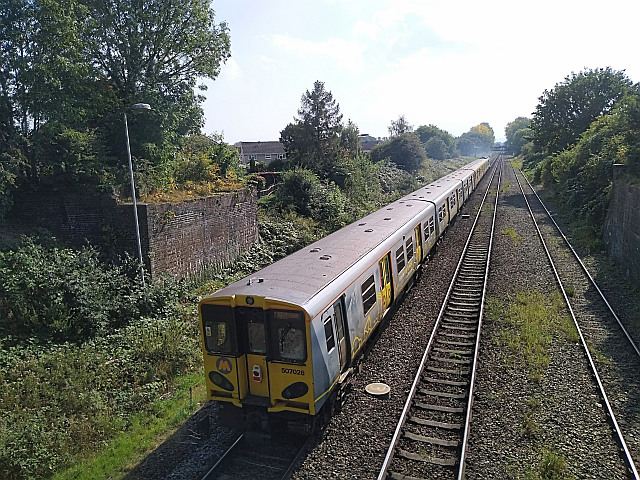
... the units were 507 126 (pictured) - with, we understand, was 508 126. Next to, according to the excellent Todays Railways magazine, will be 508 111/508 128 and 508 117/508 130. The picture is taken from Montague Bridge, Shrewsbury.
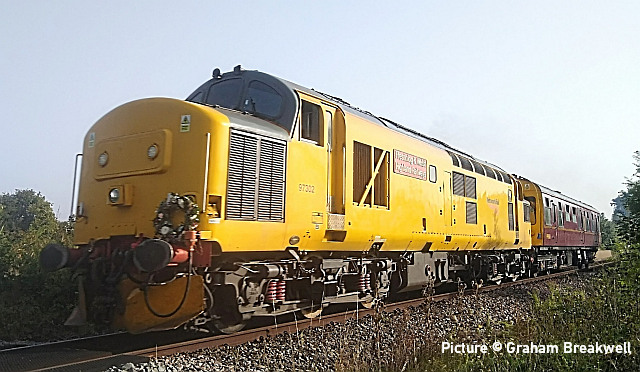
I’ve also attached an image taken 0n 6 September, 97 302 hauling West Coast Railways Inspection Saloon 999506 with 2Z66 the 08:19 from Shrewsbury to Aberystwyth. It was scheduled to run each day in the week, but running around 24 minutes late due to the knock-on effects of the late running 06:22 Birmingham New Street to Aberystwyth.
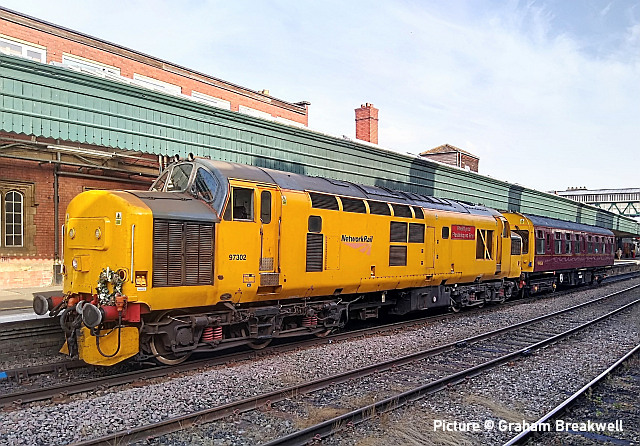
Shrewsbury station. It seems that the saloon is carrying familiarising Thameslink staff on the route’s ERTMS signalling. Does anyone kow the reason for the wreath?
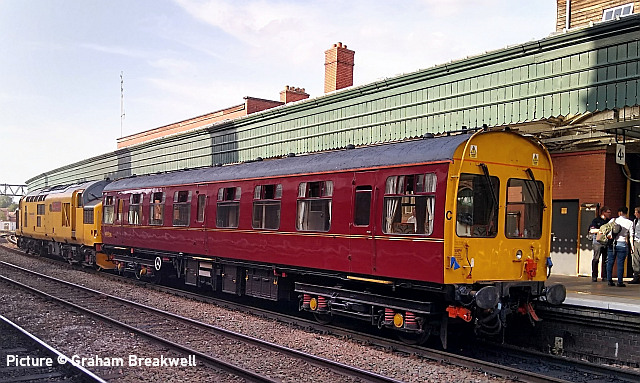
The saloon.
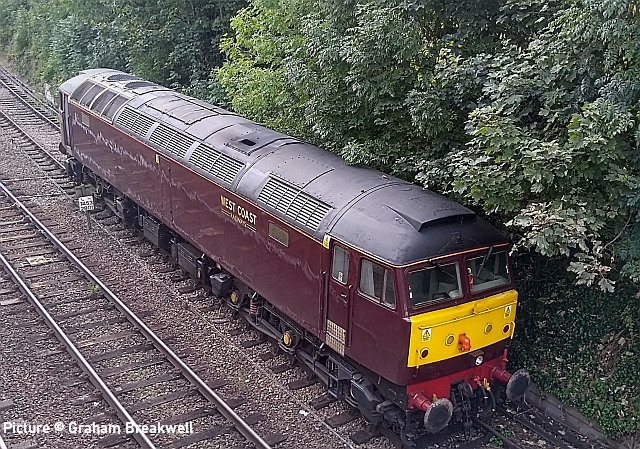
On arrival at Coleham the saloon was stabled next to 37 405 and 97 302 moved into the adjacent road. In the absence of a run round loop at the depot. 57 012, which had brought the saloon from Carnforth, was used to shunt the saloon for 97 302 to lead the train on its final trip the next day.
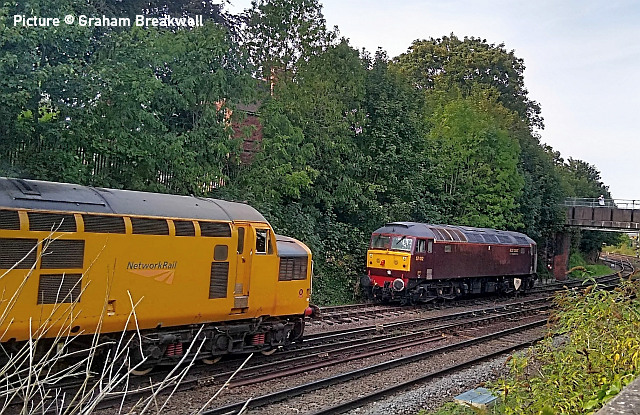
On the next day, 97 302, still carrying the wreath, re-joins the main line at Sutton Bridge Junction, having a close brush with the trackside vegetation.
From Dave Sallery's archive
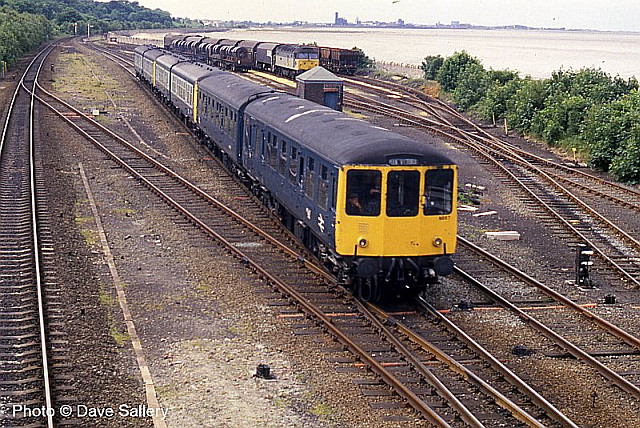
A Newton Heath-based Class 104, built by Birmingham Railway Carriage and Wagon co, leads a pair of class 108s through Mostyn on a Llandudno - Manchester Victoria working 31 May 1989. All except one of these 104 units ran in plain blue livery until withdrawal in 1991. In the background can be seen 47 195 Muricidae on a steel coil train for Mostyn Docks.
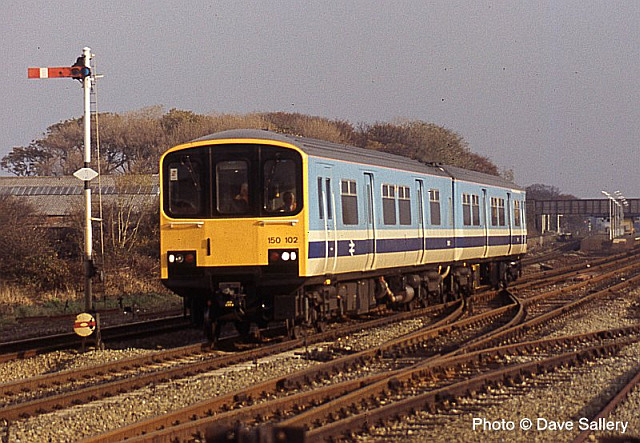
Brand new 150 102, one of the two propotype 'Sprinters' passes Prestatyn on a crew training turn - 18 November 1985. Hard to believe these units are now 38 years old. 150 102 is nowadays with Northern.
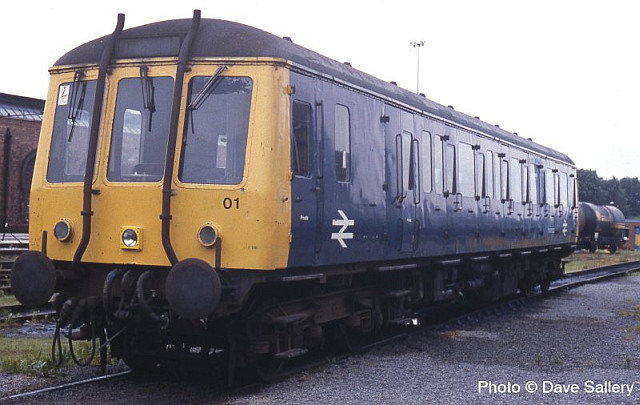
A former Western Region Class 121 single car unit is seen on Chester depot on 14 June 14th 1993. The unit was in use as a driver route learning vehicle and its departmental number was 975023 and its former number was 55001. Note the central windscreen wiper added for the route learning duty. The unit now preserved on the East Lancs Railway.
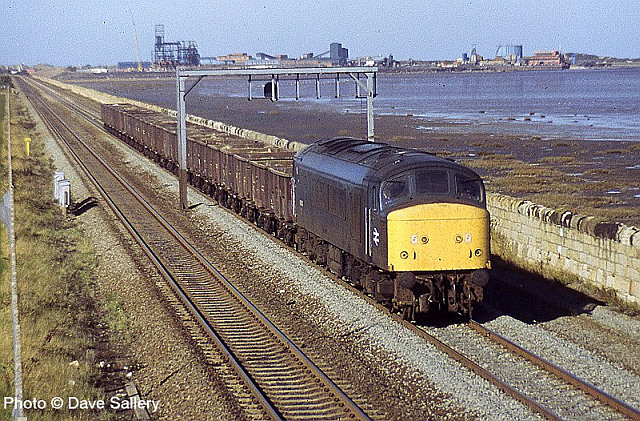
With Point of Ayr colliery prominent in the background, Toton based Class 45 No. 45007 heads along the Dee estuary past Ffynnongroew on an up spoil train on 15 October 1986.
Looking back: Articulated and geared locomotives - by David Pool
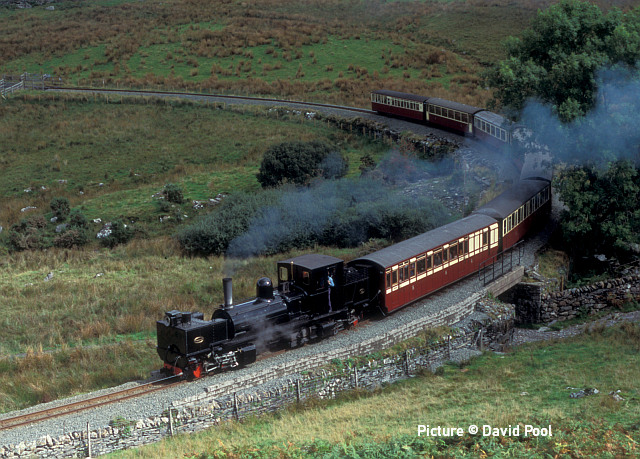
The Beyer Garratt K1 is demonstrating its flexibility as it rounds the curve at Ffridd Isaf, approaching Rhyd Ddu on the Welsh Highland Railway on 19 September 2021. Built by Beyer Peacock in 1909, it was rather unusual in that it was a compound Garratt with high and low pressure cylinders. This was a period in which several different locomotive designs were evolving, all with the aim of providing power without the disadvantages of weight and long wheelbases, both of which could be detrimental to the track.
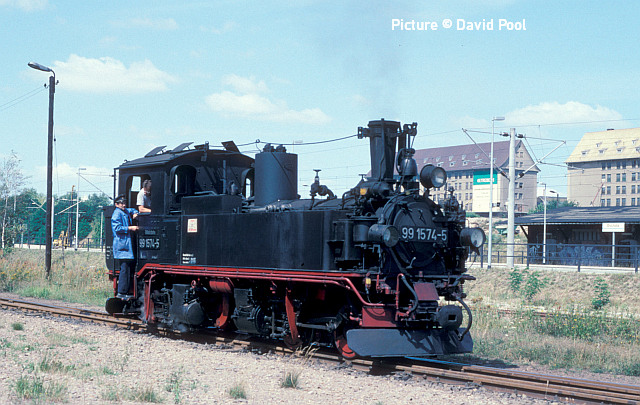
In Saxony a similar flexible arrangement was being used for a versatile locomotive which could be used on passenger and freight workings, which became known as the Sachsen-Meyer type. One of the surviving examples is a type IV K. The K refers to it being 750mm narrow gauge, and the V denotes it is a compound locomotive. Note that the cylinders face each other. The number 99 1574-5 is an East German (DR) number, although it had been in the DB system as 099 707. Built by Sachsiches Maschinenfabrik in 1912 (Works No. 3556), it was on the Oschatz to Mügeln line on 9 August 1998, photographed at Oschatz.
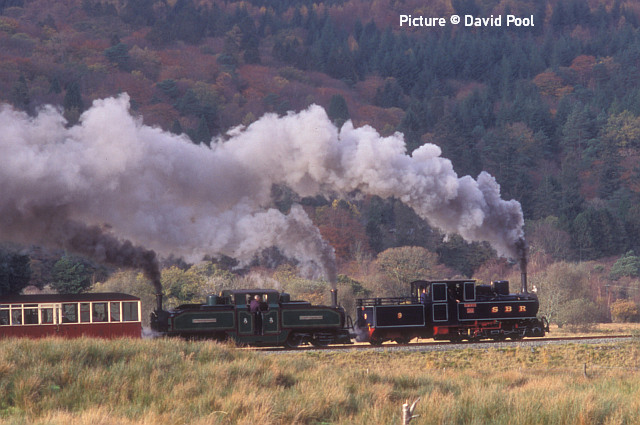
The third type of locomotive with separate high pressure and low pressure cylinders was that designed by the Swiss engineer Anatole Mallet, and used widely on standard and narrow gauge lines throughout the world. In this design one of the powered wheel sets is carried on a pivoted sub frame, the other powered wheels being in the main frame which supports the cab and boiler. Two German built narrow gauge Mallets are preserved at Statfold Barn, and one of these, Jatibarang No.9, Arnold Jung No.4878 (1930), spent its working life in Indonesia. On 12 November 2011 it was visiting the Welsh Highland Railway, and was paired with Earl of Merioneth as they tackled the 1 in 60 gradient at Nantmor.
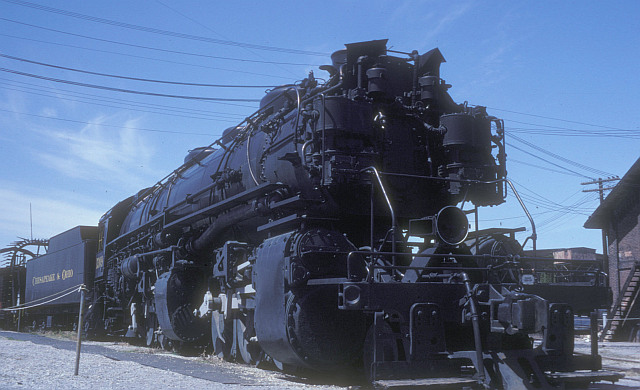
Many steam locomotives in the USA were often described as Mallet type, in that they had wheel arrangements such as 4-6-6-4 “Challenger”, 2-6-6-6 “Allegheny” and 2-8-8-4 “Yellowstone”. Although these had four cylinders, with the front driving wheels on a sub frame, they did not have high and low pressure cylinders (compounds), which was specified in Mallet’s patent, so they would be Articulated locomotives rather than Mallets.
One of the few true Mallets in the USA was the H-6 Class of locomotives on the Chesapeake and Ohio Railroad, some of which were the last locomotives built by Baldwin for any North American Railroad. 1309 was delivered in 1949, being an improved 1921 design, and after a working life of only seven years was preserved in the Baltimore Railroad Museum, where I photographed it on 23 April 1978. Note the 35 inch diameter low pressure cylinders and the 22 inch diameter high pressure cylinders behind. I understand that 1308 has also been preserved, but even better news is that 1309 was returned to steam in 2020, and ran on the Western Maryland Scenic Railroad in 2021 and 2022.
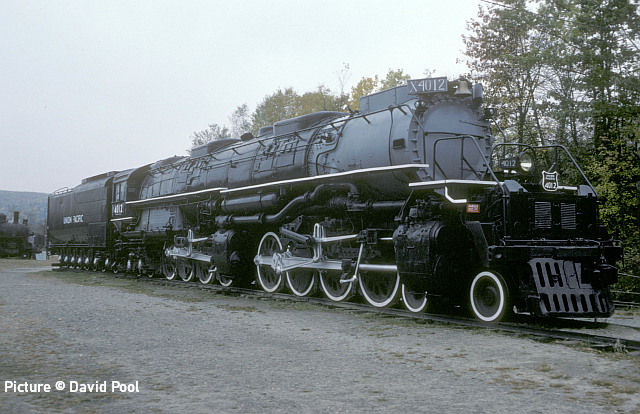
They may not strictly be Mallets, but it would be a pity not to mention the Big Boys of the Union Pacific Railroad. These were not compounds, in that all four cylinders used high pressure steam and were the same size, as shown in my photograph of 4012 at Bellows Falls, Vermont, on 16 October 1977. This particular locomotive is not likely to return to steam, since another Big Boy 4014 was restored to steam in 2019, and since then has travelled widely in the USA.
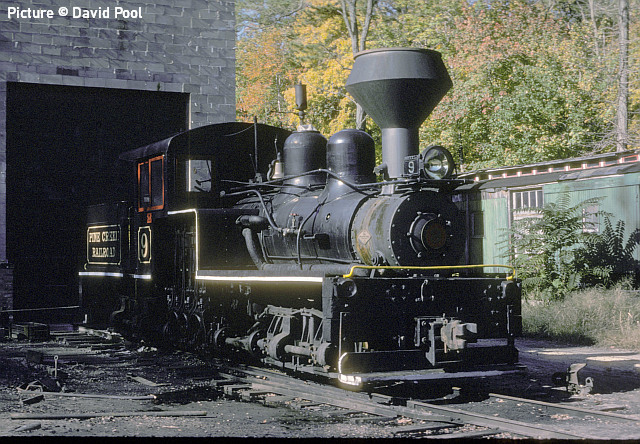
The logging operations in North America made use of a family of steam locomotives of which the Shay is probably the best known. Their task was to haul logs in difficult terrain on tracks which were not intended to be permanent. Speed was not needed, but power and reliability were essential reqirements. Most Shays were 3 ft gauge, but standard and narrower gauge Shays were sometimes built. The basic designs were for locomotives with two or three bogies (trucks), the outer wheels on one side of the locomotive having bevel gears engaging a line shaft connected to a crankshaft powered by three vertical cylinders, although he smallest locomotives (often 2ft gauge) might have two cylinders.
Ephraim Shay was a Logger who knew what was required, and the Lima Locomotive Works produced the first Shay locomotives to his specification in 1878, the last Lima Shay being delivered in 1945. The distinguishing feature of Shays is the offset boiler, which counterbalances the row of vertical cylinders located in front of the cab. Lima Shay 3314(1927) is a 3ft gauge two truck locomotive based in Allaire State Park on 23 October 1977 as Pine Creek Railroad No.9, being in the care of the New Jersey Museum of Transportation.
The Climax locomotive was similar in performance to the Shay, but lighter, claiming to put less load on the track. It had steeply inclined cylinders on each side of the boiler which drove a jack shaft parallel to the axles and geared to a drive shaft running centrally down the locomotive. Bevel gears connected the drive shaft to the driving wheel axles, like a motor vehicle with rear wheel drive.
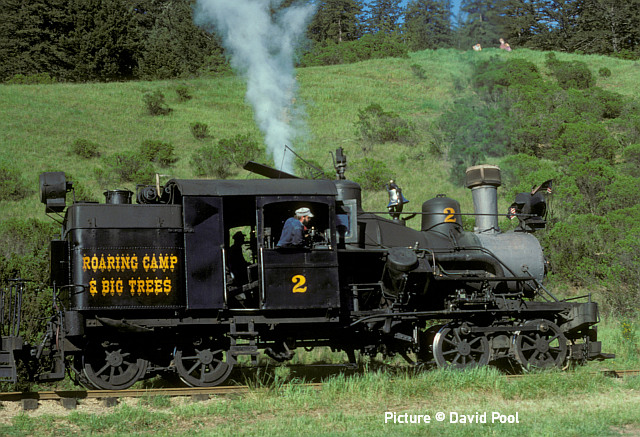
The Climax Works in Pennsylvania ceased production in 1928, and one of the last locomotives produced will have been Works No.1692 (1928), which on 8 April 1978 was awaiting restoration at the Roaring Camp and Big Trees Narrow Gauge Railroad in Felton, California. It previously worked for the Elk River Coal and Lumber Co in West Virginia.
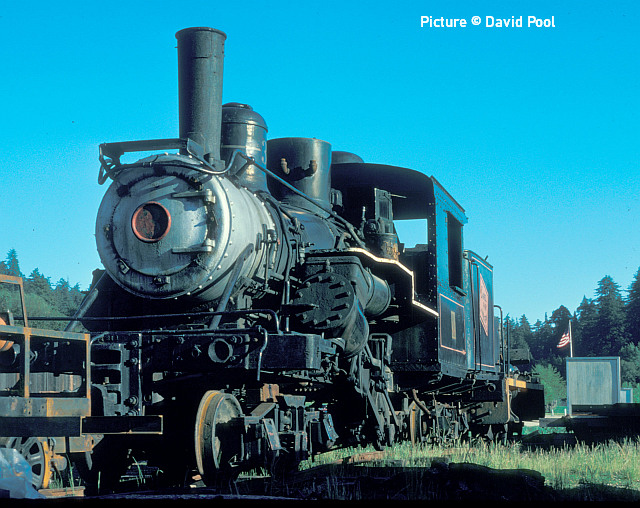
In steam at Felton on that day was another variety of logging locomotive, the Heisler. This particular locomotive had been built in 1899 to work at the West Side Lumber Co. operations in Tuolumne, California. In 1947 it was converted to standard gauge, but reverted to 3ft gauge in 1962. It is probably the oldest operating Heisler. The cylinders are in a V configuration, connecting to a horizontal shaft which in turn drives the axles through bevel gears. Unlike the Climax, on which all the axles are driven from the drive shaft, in a Climax only the outer axles in each truck are connected to the drive shaft, the wheels on the other axles being driven by siderods from the outer wheels.
Home page | Archive | Previous Notice Board